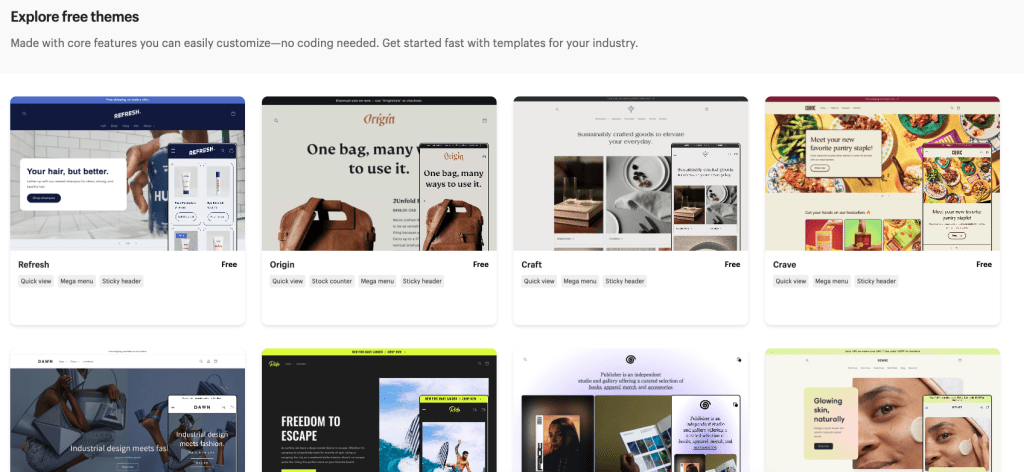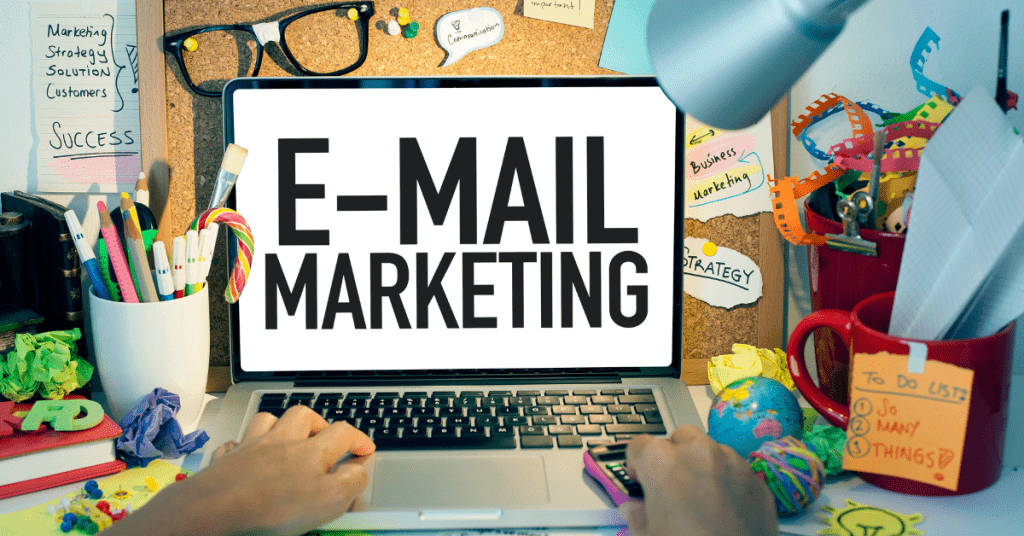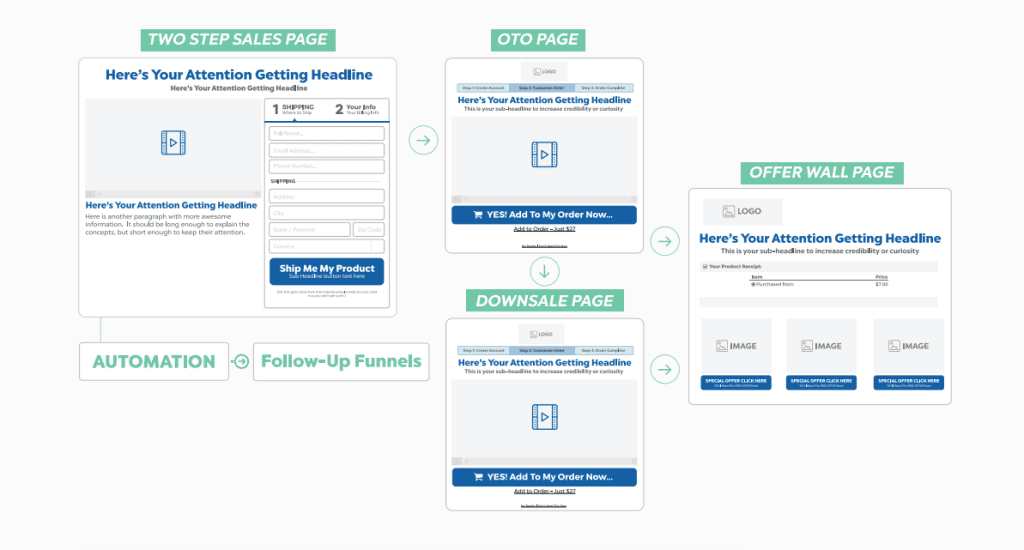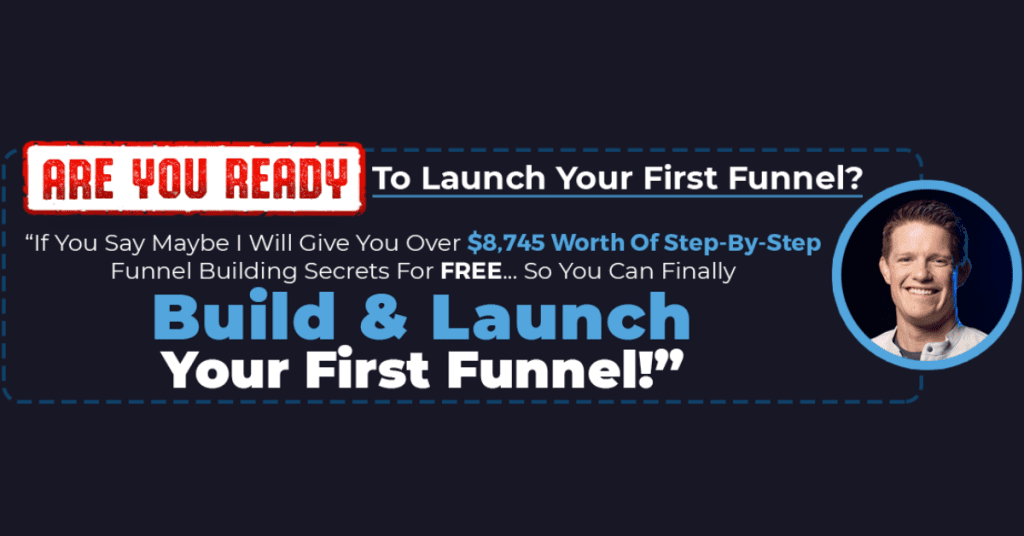A Shopify store serves as the launchpad for entrepreneurs eager to carve their niche in the digital marketplace. While establishing an online presence is a critical first step, the true measure of success lies in the ability to drive sales effectively. Let’s see how you can boost your Shopify store sales with these strategies.
Whether you’re a beginner or an experienced online business owner, these proven methods are designed to elevate your Shopify store to new heights. In this guide, we’ll explain the secrets to skyrocketing your Shopify store’s revenue with five tried-and-true strategies that go beyond the basics. From optimizing the user experience to harnessing the power of digital marketing, we’ll explore the actionable steps that can transform your store into a sales powerhouse.
1. Pick The Right Theme Optimized for Conversions – Boost Shopify Store Sales

Selecting the right theme for your Shopify store is a crucial decision that directly impacts its overall performance, user experience, and ultimately, your conversion rates. A well-optimized theme not only enhances the visual appeal of your online store but also ensures a seamless and intuitive journey for your visitors from landing on the site to making a purchase.
Mobile Responsiveness
Firstly, prioritize responsiveness. In an era dominated by mobile browsing, your chosen theme must be fully responsive. This will provide an optimal viewing experience across various devices and screen sizes. Besides, Google also prioritizes mobile-friendly websites in its search rankings.
Hence, making a responsive design Shopify store is not just a user experience necessity but also an SEO advantage. A theme that adapts gracefully to different devices ensures that potential customers can access your site easily, increasing the chances of conversions.
Simplicity
Secondly, simplicity and clarity in design are paramount. While it might be tempting to opt for a theme with flashy graphics and intricate design elements, an overly complex layout can overwhelm visitors and distract them from the primary goal—making a purchase.
Choose a theme that is clean, intuitive, and showcases your products prominently. Minimalistic design not only enhances the visual appeal but also directs the focus toward your products, making it easier for customers to find what they’re looking for and proceed to checkout without unnecessary distractions.
Furthermore, consider the customization options provided by the theme. A theme that allows for easy customization enables you to align the aesthetics of your store with your brand identity. Look for themes that offer customizable colours, fonts, and layouts, ensuring that you can tailor the visual elements to create a cohesive brand experience.
Consistency in branding across your website fosters trust and recognition, contributing to a positive user experience and, consequently, improved conversion rates. Additionally, customizable features enable you to adapt your site to seasonal promotions or changes in your product lineup, keeping your storefront fresh and engaging.
2. Provide As Much Social Proof As You Can – Boost Shopify Store Sales

Leveraging social proof is a powerful strategy to build trust and credibility for your Shopify store, influencing potential customers to make informed purchasing decisions. Social proof comes in various forms, including customer reviews, testimonials, social media endorsements, and user-generated content. Incorporating these elements effectively into your online store can significantly boost your conversion rates.
Customer Reviews & Testimonials
One of the most impactful ways to provide social proof is by showcasing authentic customer reviews and testimonials prominently on your product pages. Encourage satisfied customers to leave reviews by implementing a straightforward review system, and consider offering incentives, such as discounts or loyalty points, for those who share their experiences.
Genuine testimonials act as a virtual word-of-mouth recommendation, assuring prospective buyers of the quality and reliability of your products or services.
Social Media
In addition to reviews, integrating social media endorsements can further enhance your store’s credibility. Feature user-generated content, such as photos and posts from customers showcasing your products in action, on your website. This not only provides visual evidence of your products’ value but also creates a sense of community around your brand.
Utilize social media widgets or plugins to display your latest posts or customer interactions directly on your Shopify store, emphasizing the real-world connection between your brand and its satisfied customers.
Trust Badges & Certifications

Furthermore, consider implementing trust badges and certifications. Display logos of well-known payment gateways, security certificates, or any industry affiliations that your store possesses.
These visual cues signal to customers that their transactions are secure and that your business adheres to recognized standards. Trust badges instill confidence and alleviate concerns about online security, ultimately facilitating a smoother path to conversion.
Additionally, prominently displaying the number of satisfied customers, successful transactions, or any relevant milestones can further reinforce the legitimacy of your Shopify store and create a positive perception among potential buyers.
3. Use Email Marketing to Promote Your Products – Boost Shopify Store Sales

Email marketing remains a potent and cost-effective tool for promoting products and driving sales for your Shopify store. Crafting a successful email marketing strategy involves more than just sending occasional newsletters. Instead, it requires thoughtful planning, segmentation, and compelling content to engage your audience effectively.
Email Subscriber Segmentation
To begin, you need to build and segment your email list strategically. You can do this by dividing your subscribers based on their preferences, purchase history, or engagement level with your emails. This segmentation allows you to tailor your email campaigns to specific groups, delivering more relevant content and offers.
For instance, you might create targeted campaigns for first-time customers, loyal patrons, or those who have abandoned their carts. By understanding your audience’s diverse needs and behaviours, you can personalize your messages for maximum impact.
Eye-Catching Headline
Next, create attention-grabbing and personalized email content. You need to craft compelling subject lines that entice recipients to open your emails. Besides, you may use personalization tokens to address subscribers by name and incorporate dynamic content that adapts to their preferences.
You can feature visually appealing images of your products, accompanied by persuasive copy that highlights their unique selling points. Also, consider using storytelling techniques to create narratives around your products, making the content more engaging and relatable.
Additionally, include clear and compelling calls-to-action that guide recipients towards your desired conversion, whether it’s making a purchase, exploring a new collection, or taking advantage of a limited-time offer.
Email Automation
Furthermore, leverage automation to streamline your email marketing efforts. Implement automated workflows for various scenarios, such as welcome emails for new subscribers, abandoned cart reminders, and post-purchase follow-ups. Automation ensures timely and relevant communication without requiring constant manual intervention.
Set up drip campaigns to nurture leads over time, providing valuable content and gradually guiding them towards making a purchase. By automating key touchpoints in the customer journey, you can maintain consistent engagement and increase the likelihood of converting prospects into loyal customers.
By segmenting your audience, creating personalized and compelling content, and leveraging automation, you can build strong relationships with your customers and drive consistent sales. Keep refining your approach based on analytics and customer feedback, ensuring your email campaigns evolve alongside your business and its goals.
4. Grow Your Shopify Store With a Sales Funnel – Boost Shopify Store Sales

Growing your Shopify store with a sales funnel involves strategically guiding potential customers through a series of steps designed to build interest, trust, and ultimately drive conversions. A sales funnel typically consists of stages such as awareness, consideration, and decision-making. Here’s how you can effectively implement and optimize a sales funnel for your Shopify store.
Awareness Stage – Boost Shopify Store Sales
The first stage is creating awareness. To attract potential customers, employ various marketing channels such as social media, content marketing, and paid advertising. You need to use compelling and targeted content to capture the attention of your target audience.
Social media platforms, in particular, offer a great opportunity to showcase your products and engage with potential customers. You can then drive traffic to your Shopify store by sharing visually appealing content, promotions, and behind-the-scenes glimpses that resonate with your audience.
Besides, implementing a robust SEO strategy also plays a crucial role in increasing your store’s visibility, ensuring that potential customers discover your products when searching for relevant keywords.
Interest Stage – Boost Shopify Store Sales
Once you’ve generated awareness, the next stage is interest. This involves nurturing leads by providing valuable content, such as blog posts, videos, or downloadable resources, that address their pain points and showcase your products’ benefits.
At this stage, you need to implement email marketing campaigns to stay in touch with potential customers. You can offer exclusive content, product recommendations, and special promotions in your email to boost sales. Also, consider retargeting ads to remind visitors about your products and entice them to return. Offering incentives, such as discounts or free trials, can further encourage prospects to move to the next stage of the funnel.
Decision Stage – Boost Shopify Store Sales
The decision-making stage is where you convert leads into customers. You need to ensure that your product pages are optimized for conversions with clear product descriptions, high-quality images, and compelling calls to action.
This can be done by implementing trust signals such as customer reviews, money-back guarantees, and secure payment icons to instil confidence. Another important way is to simplify the checkout process to minimize friction and reduce the likelihood of abandoned carts.
Post-purchase, focus on customer satisfaction and retention strategies to encourage repeat business and loyalty. You need to analyze your funnel metrics continuously to identify areas for improvement and optimize the user journey for maximum effectiveness.
By creating awareness, nurturing leads through the consideration stage, and optimizing the decision-making process, you can build a robust sales funnel that consistently drives conversions and fuels the growth of your e-commerce business.
Regularly analyze data, gather customer feedback, and adapt your funnel to evolving market trends to ensure sustained success in the competitive online retail landscape.
5. Optimize Your Cart Funnel With A/B Testing – Boost Shopify Store Sales

A/B testing, also known as split testing, is a powerful methodology for optimizing your sales funnel by systematically comparing two versions of a page or element to determine which performs better in terms of user engagement, conversions, and other key metrics.
Implementing A/B testing in your sales funnel can provide valuable insights into customer behaviour and preferences. This will enable you to make data-driven decisions to enhance the overall performance of your online store.
Start by identifying the elements within your sales funnel that you want to test. This could include variations in headlines, call-to-action (CTA) buttons, product descriptions, images, or even entire page layouts.
For instance, you might experiment with different wording in your CTAs or test the impact of using different colours for your buttons. By isolating and testing specific elements, you can pinpoint the factors that have the most significant impact on user behaviour and conversion rates.
Implement A/B tests gradually and systematically, focusing on one variable at a time to ensure clarity in the results. Divide your audience randomly into two groups. One group was exposed to the original version (A) and the other to the modified version (B).
Monitor and compare the performance metrics of both versions, such as click-through rates, conversion rates, and average order value. Use statistical analysis to determine whether the observed differences are statistically significant. This can ensure that the results are reliable and not due to random chance.
Continuously iterate and refine your sales funnel based on the insights gained from A/B testing. A/B testing is an ongoing process that allows you to refine your understanding of customer behaviour over time.
Step-by-Step Guide to Building Your Shopify Store Sales Funnel with ClickFunnels
Building a sales funnel for your Shopify store product using ClickFunnels can be a strategic way to optimize conversions and guide potential customers seamlessly through the buying process.
Get Started with ClickFunnels Free Trial
Here’s a step-by-step guide to help you create an effective sales funnel:
Step 1: Set Up Your ClickFunnels Account
If you don’t have a ClickFunnels account, sign up and choose the plan that best suits your needs. Once logged in, explore the ClickFunnels dashboard and familiarize yourself with its features.
Step 2: Create a New Funnel
Click on “Funnels” in the top menu, then “Create Funnel.” Choose “Collect Emails” or “Sell Your Product” based on your primary goal. For selling a product, select “Sales.” Name your funnel and choose a group tag.
Step 3: Select a Template
ClickFunnels offers a variety of templates for different purposes. Choose a template that aligns with your product and the message you want to convey.
Step 4: Customize Your Funnel
Customize each page of your funnel by adding your product images, compelling copy, and a clear call-to-action. Use the drag-and-drop editor to arrange elements on the page. Customize colours, fonts, and other design elements to match your brand.
Step 5: Create Opt-In and Sales Pages
Include an opt-in page to capture leads. Ask for essential information like email addresses to build your email list. For the sales page, highlight your product’s features and benefits. Incorporate persuasive elements such as testimonials, product images, and a strong value proposition.
Step 6: Add the Order Form and Checkout
Integrate the order form and checkout pages seamlessly. ClickFunnels supports various payment gateways, including Stripe and PayPal. Ensure a smooth and secure checkout process to minimize friction for customers.
Step 7: Set Up Email Integration
Connect your ClickFunnels account with your preferred email marketing platform (e.g., GetResponse, Mailchimp). Set up automation for email sequences, including order confirmations, shipping notifications, and post-purchase follow-ups.
Step 8: Implement Upsells and Downsells
Utilize ClickFunnels’ capabilities for one-click upsells and downsells. Offer complementary products or special deals after the initial purchase to maximize revenue.
Step 9: Set Up Analytics and Tracking
Integrate Google Analytics or other tracking tools to monitor the performance of your sales funnel. Track key metrics such as conversion rates, average order value, and customer acquisition cost.
Step 10: Test and Optimize
Launch your sales funnel and monitor its performance over time. Conduct A/B testing on different elements such as headlines, CTA buttons, or pricing to identify what resonates best with your audience. Continuously optimize your funnel based on data and customer feedback.
Step 11: Drive Traffic to Your Funnel
Use various channels to drive targeted traffic to your sales funnel, including social media, email marketing, and paid advertising. Leverage the Shopify-ClickFunnels integration to seamlessly connect your funnel with your Shopify store.
Step 12: Scale and Iterate
Once you’ve found a winning combination, consider scaling your advertising efforts. Regularly review and iterate on your sales funnel to adapt to changing market conditions and customer preferences.
Get Started with ClickFunnels Free Trial
By following these steps and leveraging ClickFunnels’ features, you can create a well-optimized sales funnel for your Shopify store product, driving higher conversions and maximizing the value of each customer interaction.
Final Thoughts – 5 Ways to Boost Sales On Shopify Store
Transforming your Shopify store into a sales powerhouse is not just a possibility. Instead, it’s a strategic imperative for success in the competitive world of e-commerce. By implementing the five proven strategies outlined in this guide, you have the tools to elevate your online business, captivate your audience, and drive sustainable growth.
The key lies not only in adopting these techniques but also in consistently adapting and refining your approach based on evolving market trends and customer feedback. As you embark on this journey to boost sales on Shopify, stay innovative, stay customer-focused, and watch your online store flourish into a thriving hub for digital commerce.
Here’s to unlocking the full potential of your Shopify venture and achieving unparalleled success in the dynamic landscape of online retail.





